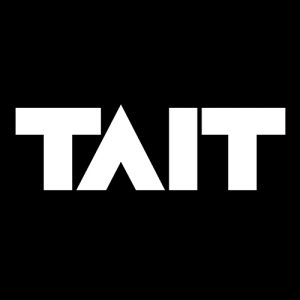
This article features Sam Brown, Sr. Director of North American Operations at TAIT. He came to TAIT from Boeing South Carolina, 787 Final Assembly & Delivery and has worked in operations for 13 years. Sam also spent 10 years in the US Air Force.
At TAIT, Operations as a business unit is a host of different departments producing and delivering a product that represents TAIT’s brand. Operations works with every department in the organization globally including fabrication, machine shop, post-processing, integration, design, project management, sales, assets, rentals, procurement, engineering, facilities etc. The need for Operations to have touch points throughout the organization is imperative for our employees as well as our customers. With constant collaboration and communication, we ensure first-time-right applications and higher efficiency.
Sure. If you break it down, there are four groups that make up the fabrication department for TAIT’s North American Operations:
Staging Fabrication is our staging department which primarily focuses on the manufacturing and assembly of our stages, more specifically they focus mainly on standard decks and some custom decks.
Custom Fabrication focuses on the stage or rigging elements that move.
Controls Fabrication focuses on the manufacturing of our electrical and show control products.
Packaging builds the carts that transport our products out of the shop. The design of our carts is specific to the design of the element. There are standard deck carts but there are also custom carts that are designed to fit the element’s dimensions. We have a fabrication specialist division that principally works on building our prototypes.
In addition to our fabrication groups, the following operation teams play a role in ensuring that we are producing world-class products.
Machine Shop is responsible for machining all parts needed to fabricate the different kits and elements that make up a show. The machine shop relies heavily on design to ensure that parts are created to specification and within a tolerance of what’s needed to complete the assembly.
Post-Processing is a new addition to the operations workflow at TAIT. It is the department that inspects everything to ensure that the finished quality of the elements being produced meet TAIT’s quality standards. This includes weld inspection, grinding of rough edges, as well as, pre-integration processes.
Integration is the group that’s responsible for integrating all elements of a project’s scope. At TAIT, our integrators work very closely with Project Managers and the client to ensure that the project build is efficient. From an operations perspective, our fabrication groups support integration to ensure that the elements are produced and completely per plan which is usually dictated by the timeline available for completion.
And, TAIT Operations also include the following departments:
Facilities are the maintenance of the building, machines, parking lots, the overall upkeep of our infrastructure that allows us to work and produce products.
Safety is the team that ensures that our building, employees and onsite clients or vendors are safe. This includes being OSHA compliant.
Quality Control is the team that oversees the compliance to track-ability requirements for our permanent installation and longer-term products used in our theme park and cruise ship markets.

All operations jobs allow us to be tactically and strategically focused on the company’s bottom line. Jobs or Internships in operations range from the shop floor to senior leadership and can include welder/fabricator, water spider, machinist, scheduler, quality inspector, artisan, electrician, shop supervisor, floor manager, project manager and mechanical engineer. If you are serious about a career or internship at TAIT, I recommend you visit our TAIT careers page and TAIT internship page.
What makes us so successful is the culmination of diverse skill sets, creative flexibility and experience in and outside of the operations team. Additionally, combining those skill sets with our ability to leverage our talent, deliver innovative and complex solutions with superior craftsmanship and unparalleled reliability, as well as having a dedicated and driven team focused on delivering world- class solutions with a purpose has been key. Likewise, consistently putting into practice our standards of care has lent to TAIT’s success.
Our standards of care are objectives that we as an organization adhere to – we apply them to our everyday lives, our customers and our employees. The standards of care are:
Safety is a measured protocol to reduce risk
Quality is a standard of excellence
Team is a group working together to achieve a common goal
Schedule is a plan outlining goals and objectives with deliverables
Cost is the sum of all resources in creating a project
Well, this isn’t an exhaustive list but here are 4 that we follow:
Policies: such as Mandatory PPE guidelines in industrial areas, no-smoking policy, commitment to safety training, leadership commitment to employee safety
Assurance: New hazard identification, safety sweeps and audits, certification and qualification training and compliance management
Communication: such as Hazard Communication Safety Data Sheets, daily safety conversations in regular meetings, new employee training, Thursday safety meetings, All Hands & All Managers Meetings
Risk Management: such as Shelter In Place, proactive hazard mitigation, prevention of slips/ trips/ falls, fire safety training, fall arrest & restraint, incident reporting, and evacuation plans
Yes. By extending our culture to the customer and treating them with the same care we treat each other, our customers have a seat at the table as an equal partner and are aware of our protocols and policies. For us, consistently being transparent with our communications internally and externally allows for great confidence and trust throughout the clients’ life-cycle.
Additionally, our brand identity, the value of our services, the uniqueness of our design concepts, the quality/ functionality/ reliability of our solutions, our ability to create extraordinary experiences, and provide a comprehensive customer experience are some of the major factors that drive customers to consistently choose TAIT. It can be said that our current and prospective customers are/will be drawn to us because they feel we are their best and only option capable of delivering beyond their expectations. It’s important that we continue to understand our uniqueness and strengths while pushing to leverage and improve upon them.
Yes and No. For the former, it’s no secret that lead time reduction correlates to productivity and potential for higher sales. In addition to shorter lead times, there must be a continued focus on streamlining departments and timely roadblock resolution. That resolution effort includes (but is not limited to) ensuring solid inventory management, parts availability & shipment reduction (transportation of product), succinct quality control processes, consolidation of vendors, sub-assembly opportunities (i.e. outsourcing), and feeder-lines.
As for the latter answer of “No”, we find great success and increased sales in Permanent Installation work despite long lead times. We tackle that by ensuring the long lead time is commensurate to how the project is segmented with work performed. This means our sales, project management and operations team must work closely together to understand strategies, deadlines, capacity, labor needs etc.
Yes, and I believe the early successes TAIT has seen with PI clients is a testament to each business function and the ability to execute on deliverables. Our customers rely on us because we have a demonstrated propensity to deliver results that often exceed the highest of expectations. Therefore, continuous improvement is so important to our future. Likewise, our reputation for being the premier solution in the industry will only continue to grow as we continue to improve.
We have 40 years of experience under our belts, we have figured out ways to create and improve custom products for all live events, we have been consistently innovative with existing products, concepts and outputs, and our success in the touring industry has only made us stronger in all other live event markets.
Knowing how to adapt and ensure customer satisfaction is imperative.
Having that reputation translates into the development of lasting relationships and future business opportunities.
Supply Chain is critical to what we do at TAIT. It is not only important to our overall customer satisfaction, but it’s absolutely vital to our market competitiveness. Long story short: the better our supply chain, the more likely we are to deliver our product timely, efficiently, and below cost.
It truly varies and is an extensive list, but in summary, a ton of brain cells, teamwork, talent, paper, plastic, sweat, steel, aluminum, gas, wire, wood, paint, and pride.
Our North American and United Kingdom operations teams are divided based on skill set and project. Our North American operations team is more touring-centric and focuses on portable installs and one-off projects manufactured with aluminum. Our United Kingdom operations team focuses on our larger-scale permanent installs and temporary rentals manufactured with steel.
As our team and markets continue to evolve, our North American and United Kingdom operations teams continue to be more cross-functional. Our competitive advantage is that we are not built to be a shop where a design must be 100% complete or handed off to bring the solution to life. Because of that, the projects we build are high-risk, but that risk is calculated to drive results so that globally, we can build anything a client or designer asks of us.
One of our operations initiatives this year is to collaborate even more with our sales and business development department. With a seamless collaboration, we can drive synergy and create efficiency opportunities that will immediately impact TAIT’s bottom line as it pertains to revenue and margin performance.
Lincoln on Leadership: Executive Strategies for Tough Times by Donald T. Phillips.
Lincoln On Leadership focuses on four major themes that are essential in leadership: people, character, endeavor, and communication. There are many lessons within:
Also by TAIT:
Metallica’s Show Director: Dan Braun – The Importance of Collaboration
Jim Love Talks About TAIT Navigator Automation Platform


TAIT is the World Market Leader in designing, constructing and delivering the finest live event solutions in the world. Whether it’s creating awe-inspiring spectaculars, complex touring stages, theatre engineering solutions, brand activations or cruise ship installations, TAIT delivers world-class solutions for live experiences. With its proprietary entertainment automation platform, custom-made products, and creative engineering, TAIT’s cutting-edge offerings continue to advance industry standards and exceed client expectations. As a global network of over 600 employees in 12 office locations, TAIT has worked on projects in over 30 countries, all 7 continents and even outer space. TAIT’s diverse group of clients include Taylor Swift, Cirque Du Soleil, The Metropolitan Opera House, NASA, National Geographic, Beyoncé and The Olympics. TAIT Talks is a blog curated by TAIT's leadership team with talking points that include industry insights, trending topics, how-to’s, challenges, solutions and more.
Read Full Profile© 2021 TheatreArtLife. All rights reserved.

Thank you so much for reading, but you have now reached your free article limit for this month.
Our contributors are currently writing more articles for you to enjoy.
To keep reading, all you have to do is become a subscriber and then you can read unlimited articles anytime.
Your investment will help us continue to ignite connections across the globe in live entertainment and build this community for industry professionals.